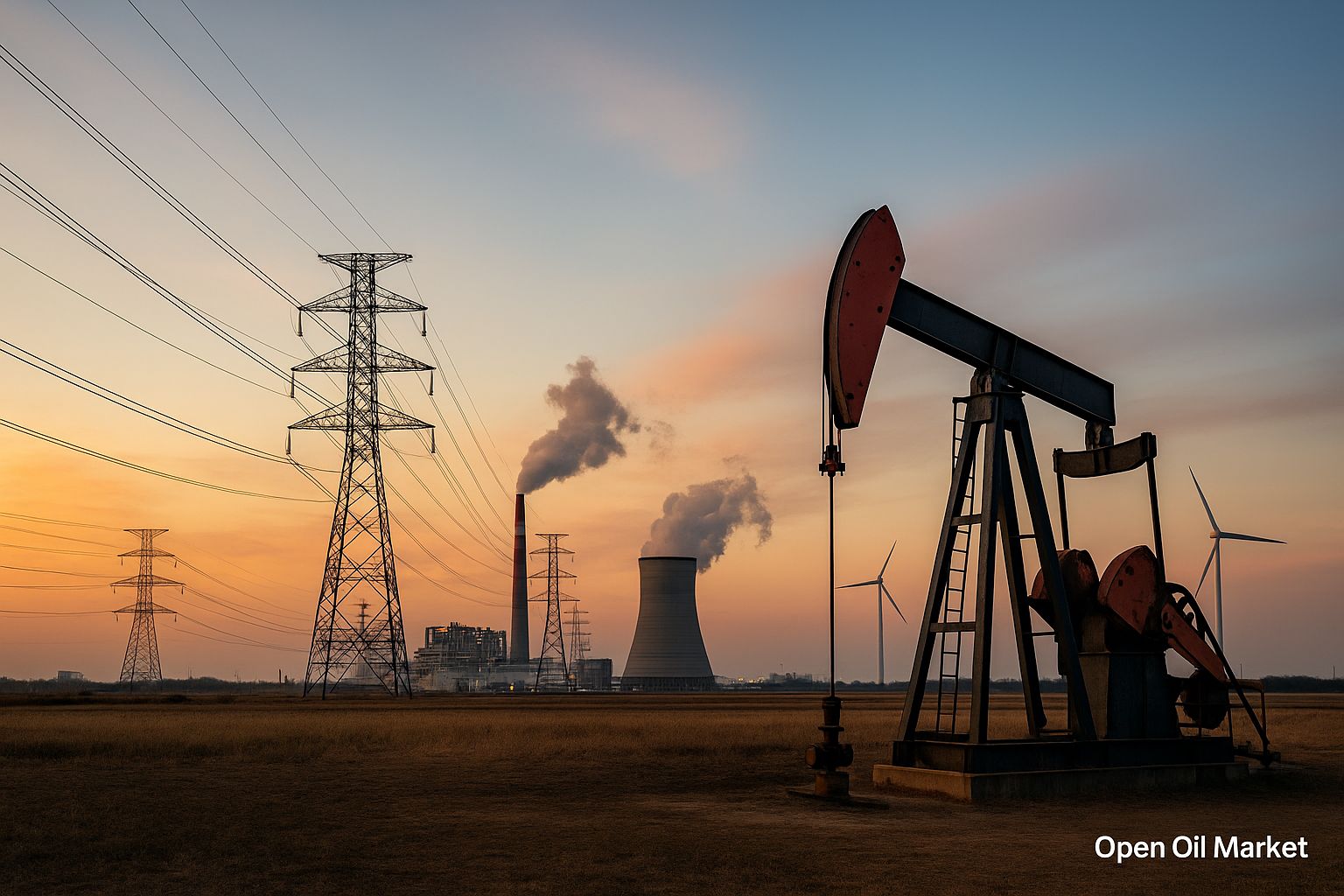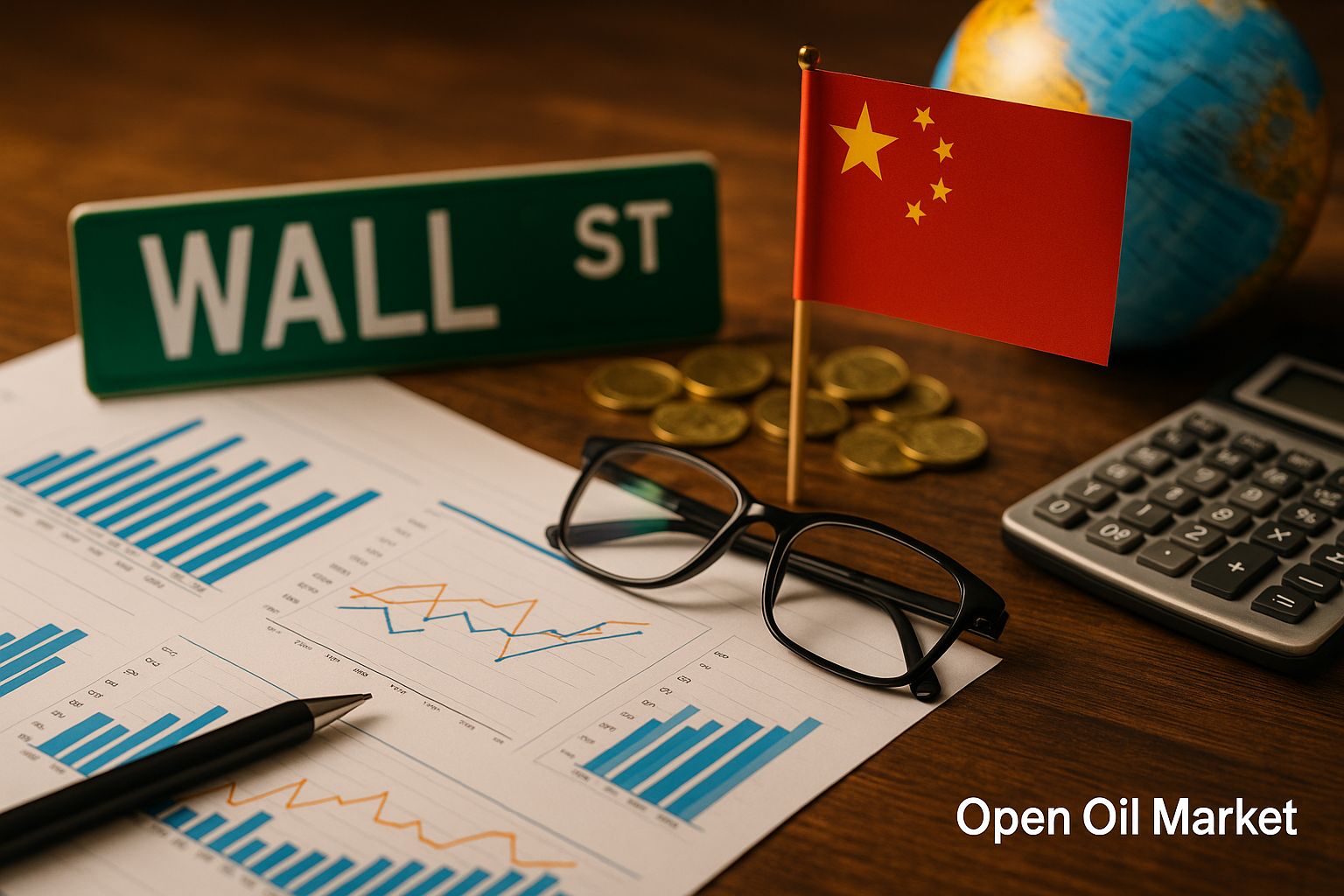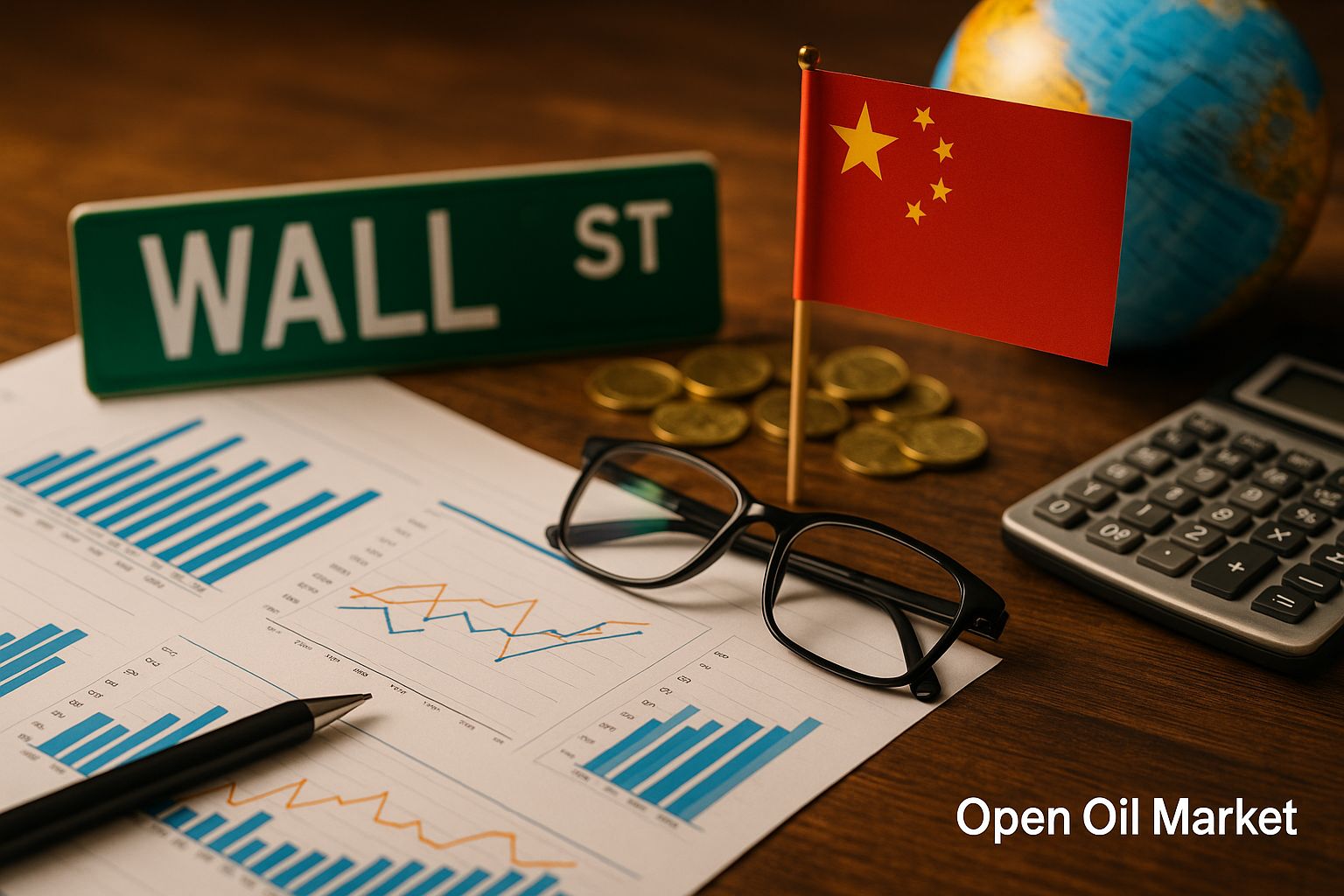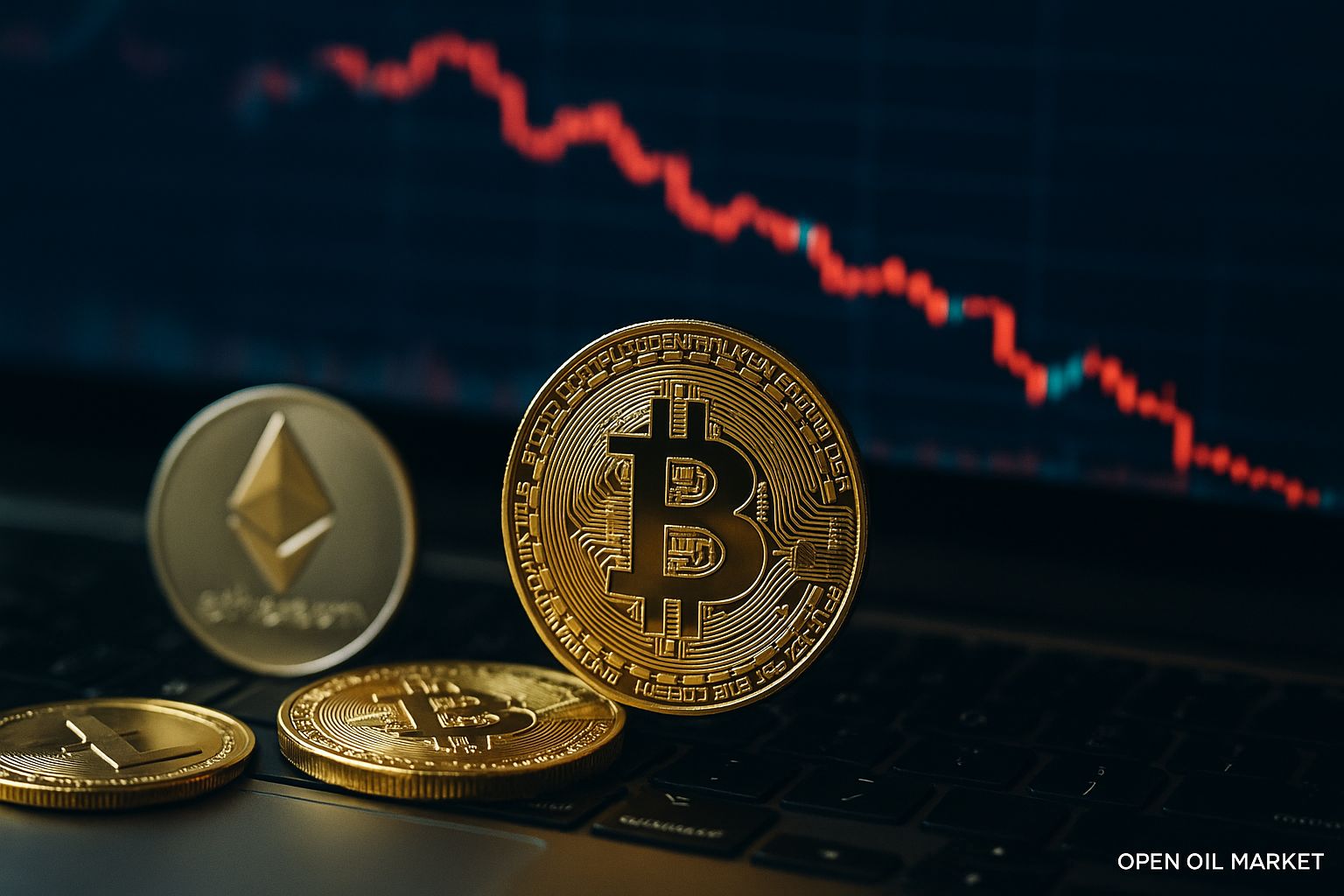
Global Overview of the Fuel and Energy Complex as of 17 October 2025: New Sanctions, India's Shift, Record Gas Reserves, Renewable Energy Development, and Outcomes of the Russian Energy Week Forum 2025.
As mid-October 2025 approaches, the global fuel and energy complex presents a relatively stable yet contradictory landscape. Oil prices remain near several-month lows due to anticipated oversupply by the end of the year; however, geopolitical tensions persist. The sanctions confrontation between Russia and the West continues to intensify – this week, the United Kingdom introduced new restrictions against major Russian energy companies, while the United States is urging allies to completely abandon imports of Russian energy resources. A surprising turn of events has emerged with India signalling its readiness to cease purchases of Russian oil, which, if realised, would significantly reshape global oil flows. Simultaneously, Europe is approaching winter with unprecedented natural gas reserves, ensuring price stability in the fuel market unless extreme cold conditions arise. The global energy transition is picking up pace: record investments are being made in renewable energy, even as traditional resources still play a fundamental supportive role in the system. In Russia, emergency measures aimed at stabilising the domestic fuel market are yielding results – gasoline shortages are decreasing, wholesale prices are retreating from peaks, although the situation in remote regions still requires attention. Central to industry discussions is the recently concluded international forum, the Russian Energy Week 2025 (15–17 October), where key topics included ensuring the domestic energy market and reorienting exports under the new sanctions conditions. Below is a detailed overview of key news and trends in the oil, gas, electricity, and raw materials sectors as of 17 October 2025.
Oil Market: Sanctions Pressure, the Indian Factor, and Oversupply
Global oil prices continue to remain depressed. The benchmark Brent is trading around $62 per barrel, while the American WTI is in the range of $58–59. This is close to the lowest levels since the beginning of summer, reflecting expectations for a surplus of oil in the market during the fourth quarter. Even a brief spike in prices during September was followed by a decline, as traders are pricing in a scenario where supply will exceed demand by the end of the year. Nonetheless, recent news introduces new variables into the oil market:
- Oversupply and subdued demand. The oil alliance OPEC+ remains committed to a gradual increase in production. At the meeting on 5 October, key member countries confirmed a collective quota increase of approximately +130,000 barrels per day starting in November, maintaining cautious recovery of lost market shares. Simultaneously, non-OPEC producers are ramping up production, primarily in the US and Brazil, which are nearing record levels. Demand for oil is growing slower than anticipated: The International Energy Agency has revised its projection for consumption growth in 2025 down to ~0.7 million barrels per day (compared to over 2 million in 2023), citing slowdowns in the economies of Europe and China and the effects of previous high prices. As a result, commercial oil stocks globally are rising, increasing pressure on prices.
- Sanctions and geopolitics. Western sanctions remain a critical factor of uncertainty. In mid-October, the UK announced sanctions against major Russian oil and gas companies (including Rosneft and Lukoil), tightening restrictions in the sector. Washington is urging partners to adopt stricter measures – up to complete abandonment of purchases of Russian oil and closing loopholes through a «shadow fleet» of tankers. The military risks further add pressure on the Russian fuel and energy complex: Ukrainian drone attacks on oil infrastructure have become more frequent. This week, facilities in the Saratov region and Bashkortostan were damaged, causing some refineries to suspend operations. Russian authorities have announced the postponement of planned repairs at oil refineries to saturate the market as much as possible – these measures aim to prevent fuel shortages in both domestic and international markets. Overall, sanctions pressure and military threats heighten volatility: any new tightening or force majeure could reduce available supply and trigger price spikes.
- India's pivot from Russian oil. The largest importer of Russian oil, India, has signalled a potential revision of its energy policy. According to the US President, Indian leadership has promised to gradually cease purchases of Russian oil, which accounted for about a third of India's imports. Although New Delhi officially states that its priority is stable prices and reliable supplies, the very fact that such a step is under discussion has alarmed the market. If India indeed reduces its imports from Russia, it would lose one of its major customers, necessitating the rerouting of significant volumes to other markets or triggering production cuts. On the one hand, India's withdrawal from Russian barrels would increase pressure on Russian exports and could exacerbate budget risks for Moscow. On the other hand, the global market would lose a significant consumer of Russian raw materials: competitive suppliers from the Middle East, Africa, and the Americas could fill the gaps, potentially redistributing trade flows. News from India temporarily bolstered oil prices above recent lows, as market participants anticipate a reduction in supply from Russia. Analysts note that the combination of these geopolitical factors is unlikely to allow prices to drop significantly below current levels – the Brent mark of around $60 per barrel is now viewed as a kind of «floor» for the market, preventing further declines.
Overall, the oil market is balancing between the pressure of fundamental factors and political risks. The predominance of supply keeps prices from rising, but sanctions and possible shifts in the market (e.g., India's withdrawal from Russian oil) prevent prices from falling too deeply. Companies and investors are acting cautiously, considering the likelihood of new shocks – from intensification of sanctions to escalation of conflicts – while the baseline scenario for the coming months suggests maintenance of moderately low prices amid an oversupply of oil in the global market.
Natural Gas: Record Reserves, Stable Prices, and Export Reorientation
By mid-autumn, the gas market presents comfortable conditions for consumers, particularly in Europe. The European Union is entering the winter season with record gas reserves: underground gas storage in the EU is filled to an average of over 95% of its maximum capacity – significantly surpassing last year's levels. Thanks to mild weather this autumn and high liquefied natural gas (LNG) deliveries, Europeans have managed to accumulate the necessary reserves without panic buying. Wholesale gas prices remain at relatively low levels: the key TTF index in the Netherlands stabilised in the range of around €30–35 per MWh, substantially lower than peak levels in autumn 2022. The risk of a repeat of last year's gas crisis has significantly decreased, although much will depend on weather conditions this winter and the stability of LNG supplies.
- Europe's move away from Russian gas. EU countries continue their course to reduce dependence on Russian gas. Direct pipeline supplies from Russia have plummeted to minimal volumes and are maintained only by a few countries under long-term contracts (such as Hungary). Over the past two years, Russia's share of the EU gas import has dropped from ~40% to less than 15%. In Brussels, additional measures are under discussion: the draft 19th EU sanctions package includes a ban on purchases of Russian LNG by 2026–2027, which would legally enshrine a complete abandonment of energy resources from Russia in the medium term. Currently, the primary resource for Europe is imported LNG from various countries, as well as increased pipeline supplies from Norway, North Africa, and Azerbaijan.
- The Eastern gas pivot. Having lost the European market, Russia is ramping up gas exports eastward. Volumes pumped through the Power of Siberia pipeline to China continue to rise and could reach record levels of ~22 billion m3 in 2025, closely approaching the pipeline’s design capacity. Concurrently, Moscow is negotiating the construction of a second phase of the pipeline through Mongolia (Power of Siberia – 2), the launch of which by the end of the decade would partially compensate for lost European volumes. Additionally, Russia is increasing LNG exports: new liquefaction capacities have been introduced in Yamal and the Far East. Additional batches of Russian LNG are being sent to **India**, **China**, **Bangladesh**, and other Asian countries that are willing to purchase gas at competitive prices. Nevertheless, overall, Russian gas exports remain below pre-sanction levels – currently, the priority for Russian authorities is the domestic market and meeting the needs of CIS allies. In the long term, the success of the "eastern pivot" will depend on Russia's ability to increase its share in the Asian market while competing with Middle Eastern and American LNG suppliers.
Thus, the global gas industry is approaching winter in a relatively balanced position. Europe possesses a significant "safety buffer" in case of cold spells, although price spikes cannot be entirely ruled out. Simultaneously, global gas trading flows have already changed radically: the EU has virtually abandoned Russian gas, while Russia has pivoted eastwards. Investors are closely monitoring the situation – from the pace of new LNG project launches worldwide to negotiations on new gas supply routes. For now, moderate demand and high levels of reserves are benefiting importers, keeping fuel prices at acceptable levels.
Electricity: Record Consumption and Network Modernisation
Global electricity consumption in 2025 is steadily moving towards new historical highs. Economic growth, digitalisation, and widespread adoption of electric vehicles are driving demand for electricity across all regions of the world. Analysts estimate that global electricity generation will exceed 30,000 TWh for the first time in history. Major economies are contributing significantly to this record: **the United States** is projected to consume around 4.1 trillion kWh (a new peak for the country), while **China** is expected to exceed 8.5 trillion kWh. Energy consumption is also rapidly increasing in developing countries in Asia, Africa, and the Middle East driven by industrialisation and population growth. Such rapid growth in consumption poses new challenges for infrastructure:
- Network strain. Increased demand for electricity necessitates proactive modernisation of the electrical network complex. Many countries have announced large-scale investment programmes aimed at updating and expanding networks, as well as constructing new power plants – to prevent capacity shortages and interruptions during peak loads. For example, in the US, energy companies are investing billions of dollars to strengthen distribution networks in response to increasing loads from data centres and electric vehicle charging stations. Similar energy network enhancement projects are being implemented in Europe, China, and India. At the same time, smart grids and energy storage systems are gaining significance: industrial battery farms and pumped-storage hydropower stations are helping to smooth peak loads and integrate increasing variable generation from renewable sources. Without modernising infrastructure, energy systems will struggle to reliably serve record demand in the coming decades.
Overall, the electricity sector is demonstrating resilience, providing the economy with energy even amid record consumption levels. However, to maintain supply reliability, ongoing investments in networks, generation, and innovations are necessary. Many states regard electricity as a strategic sector, investing in its development despite budget constraints, as the stability of energy supply affects the functioning of all other segments of the economy.
Renewable Energy: Investment Records, Government Support, and New Challenges
The renewable energy sector (RES) continues its rapid growth in 2025, solidifying the global trend towards a "green" transformation of the fuel and energy complex. Investments in solar and wind energy are breaking records: it is estimated that around $400 billion was invested in RES projects globally in the first six months of 2025 – which is 10-12% more than for the same period last year. These funds are primarily directed towards building new solar and wind power plants as well as developing related technologies – energy storage systems, digital network management platforms, etc. The rapid introduction of new capacity is already reflecting on the energy balance: the production of clean electricity is growing without increasing carbon emissions.
- Record generation and share of RES. Renewable sources are taking an increasingly significant share of the global energy balance. Current data indicates that around 30% of electricity generation globally is provided by solar, wind, hydropower, and other RES. In the European Union, this figure already exceeds 45% thanks to active climate policies and a shift away from coal-fired power plants. **China** is nearing the milestone of 30% generation from RES, despite the vast scale of its energy system and continued construction of new coal plants. For the first time in 2025, global electricity production from solar and wind sources surpassed that from coal – a crucial symbolic milestone for global energy.
- Government support and incentives. Governments of leading economies are increasing support for "green" energy. In Europe, more ambitious climate goals are being introduced, requiring accelerated deployment of clean capacity and the development of emissions trading. In the US, significant subsidy and tax incentive programmes for RES and related sectors continue to be implemented (as part of the Inflation Reduction Act). In the CIS countries, efforts to promote RES are also intensifying: Russia and Kazakhstan are holding competitions to select new solar and wind projects with government support, while Uzbekistan is constructing large solar parks in deserts. This encouraging policy aims to lower industry costs and attract additional investments, speeding up the transition to clean energy.
- Growth challenges. The rapid development of RES is accompanied by challenges. The increased demand for equipment and raw materials has led to rising costs of components: for instance, prices for polysilicon for solar panels and rare earth materials for wind turbines have remained high in 2024–2025. Energy systems face the necessity of integrating variable generation – new energy storage solutions and flexible backup capacities are required to balance the network. Moreover, a shortage of qualified personnel and electrical network capacities capable of accommodating increasing RES generation is emerging in some countries. Regulators and companies need to address these issues to maintain high rates of the "green" transition without compromising energy supply reliability.
RES has already become an integral part of the global energy framework, attracting vast financial resources. The sector looks forward to further expansion – as costs for technologies decrease, the share of clean energy will rise, while innovations (such as more efficient batteries or hydrogen projects) will open up new possibilities. For investors, renewable energy remains one of the most dynamic segments, although the execution of projects must consider market risks associated with material supply, regulation, and infrastructure constraints.
Coal Market: High Asian Demand and Long-term Move Away from Coal
The global coal market in 2025 is demonstrating mixed trends. On one hand, high demand for coal persists in Asia – particularly for electricity generation during peak load periods. This summer, there was a surge in imported thermal coal in East Asia: for instance, in August, **China**, **Japan**, and **South Korea** collectively increased purchases by nearly 20% compared to the previous month. In China, a temporary tightening of environmental inspections and safety requirements has led to reduced coal production at some mines, while industrial electricity consumption was growing rapidly. China compensated for the shortfall in generation by increasing coal imports, pushing regional prices upwards: prices for Australian Newcastle coal rose above $110 per tonne (a high not seen in the last five months). Similarly, **India** and several other developing economies ramped up coal usage to support energy systems during the summer demand period. Thanks to coal, many Asian countries were able to avoid outages and meet the rising consumption.
On the other hand, the long-term outlook for the coal industry remains negative. More and more countries are adhering to policies aimed at phasing out coal in a bid to combat climate change and reduce emissions. In the European Union, the share of coal generation has dropped below 10% (down from ~15% a few years ago), with a total of 11 EU countries planning to close all coal power plants by 2030, replacing them with gas and renewable facilities. In the United States, market conditions also work against coal: cheap natural gas and rapid growth in RES continue to displace coal from the energy sector, despite some support measures for the coal industry. Even countries that have traditionally depended on coal are reducing usage: for instance, **Germany**, after a temporary increase in coal consumption in 2022–2023, has again reduced electricity generation from coal-fired power plants in 2025. Average coal prices on the global market are significantly lower than last year’s levels – in the first half of 2025, export prices from major coal hubs dropped by 25-30%, reflecting declining demand outside Asia.
- Russian coal exports. For Russia, which is among the top three coal exporters globally, these global trends mean a shift towards eastern markets. Following the EU embargo in 2022, domestic coal companies redirected supplies from Europe to the Asia-Pacific region. Now, over 75% of Russian coal exports go to **China**, **India**, **Turkey**, and other countries in the APR. This demand partially compensates for the loss of the European market; however, trading over long distances necessitates significant discounts for buyers and increases transportation costs. In the future, as the move away from coal accelerates in leading economies, Russian coal producers will need to adapt – finding new buyers, advancing deeper processing of coal, or pivoting towards domestic needs (for instance, using advanced "clean coal" technologies to supply the growing digital infrastructure). Only enhancements in efficiency and flexibility in the new conditions will allow Russian coal companies to maintain competitiveness and sales volumes.
Thus, the coal sector is currently undergoing its “swan song”: short-term demand for coal in certain regions remains high, but the long-term trend is unequivocally directed towards a reduction in the fuel's role. Coal investors are facing a contradictory reality: on one hand, in the coming years, coal will still be demanded in Asia and generate profits; on the other hand, planning new projects is complicated by risks of losing markets by the 2030s and 2040s. Strategies for diversification and cost control, as well as state policies that may mitigate the socio-economic consequences of the coal downturn, are in focus.
Domestic Fuel Market: Stabilisation Post-Crisis and Price Control
In the second half of October, the situation on the domestic fuel market in Russia has significantly improved compared to the critical September. After acute gasoline shortages in several regions and spiking prices, authorities promptly implemented a range of measures that have begun to yield results. In most subjects of the Russian Federation, the shortage of motor fuel has been eliminated: wholesale prices for gasoline and diesel have retreated from record levels, and independent petrol stations have resumed unrestricted fuel sales. However, the government continues to closely monitor the situation, especially in remote areas away from oil bases (Far East, certain Siberian regions), where supply has not fully normalised. To prevent a new wave of crisis, the following steps have been taken and extended:
- Export restrictions. The ban on the export of motor gasoline, introduced at the end of September, remains in effect and has been extended until 31 December 2025. Similarly, until the end of the year, restrictions remain on the export of diesel fuel for independent suppliers. These measures aim to direct maximum volumes of petroleum products to the domestic market to meet internal demand.
- Support for refineries and the damping mechanism. As of 1 October, the government suspended the operation of the fuel damping mechanism. This means that the state will continue to compensate oil refining plants for supplies to the domestic market, even if market prices for fuel exceed threshold levels. This maintains the financial incentive to direct gasoline and diesel to petrol stations within the country. Additionally, further incentives for increasing production are being considered: authorities have urged refineries to postpone non-urgent repairs and increase raw material processing in the coming months.
- Import and market mechanisms. To address deficits in certain regions, discussions are underway regarding the simplification of fuel imports. Specifically, a temporary zeroing of import duties on gasoline and diesel fuel is being considered, which would allow for the potential attraction of supplies from allies (for instance, from Belarusian refineries). Furthermore, regulatory authorities have intensified price monitoring for fuel: The Federal Antimonopoly Service has issued warnings to several large petrol station networks for unjustifiably high prices. The government is striving to avoid direct administrative price freezes at fuel stations, opting instead for targeted market mechanisms – such as increased damping and subsidies for fuel transporters in remote areas.
The initial outcomes of these efforts are already perceptible. By mid-October, daily gasoline and diesel output in Russia has recovered following a decline at the end of summer – aided by the completion of unplanned repairs at several refineries and the redirection of export volumes to the domestic market. In the central and southern regions of the country, wholesale bases and petrol stations have once again accumulated normal fuel stocks. Authorities are optimistic about navigating the upcoming winter season without serious supply disruptions. Nevertheless, the situation requires continuous monitoring: the government stands ready to implement additional measures if necessary to prevent a recurrence of the fuel crisis. On a systemic level, the question of modernising the sector comes to the forefront – developing storage and delivery infrastructure, implementing digital platforms for transparent resource allocation, and increasing the depth of oil processing within the country. These challenges were also discussed in the relevant sections of the REN-2025 forum, emphasising that mere emergency measures are insufficient for the long-term stability of the domestic market – comprehensive modernisation of the fuel sector is essential.
Forecasts and Prospects: Forum Outcomes and Risks of the Upcoming Winter
Overall, the global energy sector is approaching the end of 2025 in a state of active adaptation to new realities. The ongoing confrontation between Russia and Western countries is reshaping global energy resource trade: oil and gas flows are being redistributed, sanctions are compelling alternative routes and partners to be sought. Companies in the fuel and energy complex are striving to mitigate risks – whether by redirecting exports to Asian markets, enhancing in-house processing of raw materials, or hedging against price fluctuations. Concurrently, the global energy transition is gaining momentum: record investments in RES and energy efficiency are forming the long-term configuration of a sector where "green" generation plays an increasingly prominent role.
Successfully navigating the upcoming winter months will be the immediate challenge for energy markets. Europe will face a test from the cold: will it be able to maintain its gas balance during potential abnormal frosts without resuming imports from Russia? In Russia, the critical examination will be the stability of domestic fuel supply: the measures implemented must prevent a new upsurge in shortage this winter. Additionally, a background of international risks persists – from geopolitical conflicts (the tense situation in the Middle East and the ongoing conflict in Ukraine) to potential emergencies like technological accidents or natural disasters that could impact infrastructure.
The International Forum "Russian Energy Week 2025", which concluded on 17 October under the slogan "Creating the Energy of the Future Together", became an important venue for discussing current challenges and seeking solutions. Within the framework of REN-2025, significant attention was paid to ensuring the domestic energy market and revealing Russia's export potential in the new conditions. The energy dialogue "Russia – OPEC" and numerous meetings with representatives from Asian and African countries took place on the sidelines of the forum. As a result of the forum, over a dozen cooperation agreements in the energy sector were signed – ranging from projects in electrical networks and renewable energy to equipment import substitution programmes for oil and gas. These agreements and established partnerships will set the tone for further reforms and investments in the sector. The Russian leadership has confirmed its intention to strengthen the country's position in global energy markets while simultaneously guaranteeing reliable energy supply to its economy.
As the new year approaches, investors and stakeholders in the fuel and energy sector are looking to the future with cautious optimism. The industry is showing remarkable resilience in the face of unprecedented challenges – whether sanctions, logistics restructuring, or technological changes. Adaptation continues, and 2025 has become a time of significant transformation for energy. It remains to be seen how successfully the global fuel and energy complex will navigate the winter months and maintain the balance of interests achieved during this challenging phase. One thing is certain: the fuel and energy complex is globally reaching a new level of interaction and innovation, and its key players are ready for change by investing in the future and strengthening cooperation on the international stage.




